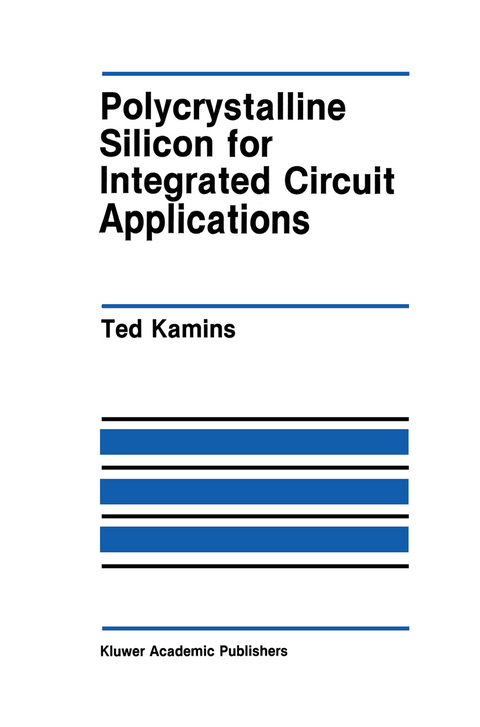
Polycrystalline Silicon for Integrated Circuit Applications
Kluwer Academic Publishers (Verlag)
978-0-89838-259-4 (ISBN)
1 Deposition.- 1.1 Introduction..- 1.2 Thermodynamics and kinetics.- 1.3 The deposition process.- 1.4 Gas-phase and surface processes.- 1.5 Reactor geometries.- 1.6 Reaction.- 1.7 Deposition of doped films.- 1.8 Step coverage.- 1.9 Enhanced deposition techniques.- 1.10 Summary.- 2 Structure.- 2.1 Nucleation.- 2.2 Surface diffusion and structure.- 2.3 Evaluation techniques.- 2.4 Grain structure.- 2.5 Grain orientation.- 2.6 Optical properties.- 2.7 Etch rate.- 2.8 Stress.- 2.9 Thermal conductivity.- 2.10 Structural stability.- 2.11 Epitaxial realignment.- 2.12 Summary.- 3 Dopant Diffusion and Segregation.- 3.1 Introduction.- 3.2 Diffusion mechanism.- 3.3 Diffusion in polysilicon.- 3.4 Diffusion from polysilicon.- 3.5 Interaction with metals.- 3.6 Dopant segregation at grain boundaries.- 3.7 Summary.- 4 Oxidation.- 4.1 Introduction.- 4.2 Oxide growth on polysilicon.- 4.3 Conduction through oxide on polysilicon.- 4.4 Summary.- 5 Electrical Properties.- 5.1 Introduction.- 5.2 Undoped polysilicon.- 5.3 Moderately doped polysilicon.- 5.4 Grain-boundary modification.- 5.5 Heavily doped polysilicon films.- 5.6 Minority-carrier properties.- 5.7 Summary.- 6 Applications.- 6.1 Introduction.- 6.2 Silicon-gate technology.- 6.3 Nonvolatile memories.- 6.4 High-value resistors.- 6.5 Fusible links.- 6.6 Polysilicon contacts.- 6.7 Bipolar integrated circuits.- 6.8 Device isolation.- 6.9 Trench capacitors.- 6.10 Polysilicon diodes.- 6.11 Polysilicon transistors.- 6.12 Polysilicon sensors.- 6.13 Summary.
| Erscheint lt. Verlag | 31.1.1988 |
|---|---|
| Reihe/Serie | The Springer International Series in Engineering and Computer Science ; 45 |
| Zusatzinfo | XIV, 290 p. |
| Verlagsort | New York |
| Sprache | englisch |
| Maße | 156 x 234 mm |
| Themenwelt | Technik ► Elektrotechnik / Energietechnik |
| Technik ► Maschinenbau | |
| ISBN-10 | 0-89838-259-9 / 0898382599 |
| ISBN-13 | 978-0-89838-259-4 / 9780898382594 |
| Zustand | Neuware |
| Haben Sie eine Frage zum Produkt? |
aus dem Bereich


